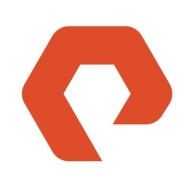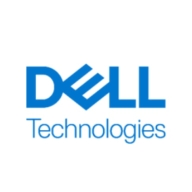


SolidFire and Dell PowerMax NVMe are advanced storage solutions for enterprise environments. Dell PowerMax NVMe seems to have the upper hand in performance and advanced features, while SolidFire is favored for its pricing and support.
Features: SolidFire stands out for its scalability, storage automation, and quality of service controls. Dell PowerMax NVMe offers superior latency, comprehensive data services such as deduplication and compression, and seamless integration with existing systems.
Room for Improvement: SolidFire could benefit from better integration capabilities, advanced analytics, and improved monitoring functionalities. Dell PowerMax NVMe users suggest the need for simplified management tools, enhancements to reporting features, and improvements in monitoring functionalities.
Ease of Deployment and Customer Service: SolidFire is praised for its straightforward deployment process and responsive customer support, making it a preferred choice for minimal setup complications. Dell PowerMax NVMe has good support but a more complex installation process, with users finding configuration and initial setup more time-consuming yet beneficial in the long term.
Pricing and ROI: SolidFire is recognized for its favorable pricing model and faster ROI due to lower initial costs and operational efficiencies. Dell PowerMax NVMe, despite higher upfront expense, is valued for its investment return over time thanks to superior performance and advanced features.



Pure Storage FlashArray//X is the world’s first enterprise-class, all-NVMe flash storage array. It represents a new class of storage – shared accelerated storage, which is a term coined by Gartner – that delivers major breakthroughs in performance, simplicity, and consolidation.
Dell PowerMax is the industry’s most secure mission-critical storage platform. With NVMe Dynamic Fabric technology, PowerMax breaks from traditional storage limitations, enabling seamless integration with cloud-native and legacy applications. Designed with a powerful scale-up and scale-out architecture, PowerMax supports mission-critical applications at scale with zero downtime and ultra-low latency. The latest PowerMaxOS 10 release harnesses AI-driven efficiencies for trusted performance, capacity, and security. By choosing PowerMax, you can trust in a secure, intelligent, and always modern storage solution that unlocks the full potential of your data to drive business success.
SolidFire delivers all five core elements needed to deliver newfound storage agility to your next generation data center and beyond. With SolidFire you can deploy new applications and capabilities faster, provide more agile and scalable infrastructure, increase application performance and predictability, enable automation and end-user self-service and raise operational efficiency and reduce cost.
We monitor all All-Flash Storage reviews to prevent fraudulent reviews and keep review quality high. We do not post reviews by company employees or direct competitors. We validate each review for authenticity via cross-reference with LinkedIn, and personal follow-up with the reviewer when necessary.